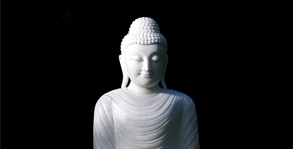Our sense organ with their many flaws are like defective tools. It would be fundamentally wrong to ascertain the truth of life and the world through sense perceptions. What we should trust is the transcendent wisdom of the Buddha, instead of relying totally on our senses.
~ Depicted from "The Four Seasonal Quotes from Khenpo"











